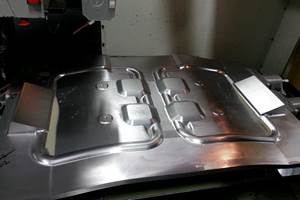Productive Meetings—Back to Basics
For many people, meetings are one of life’s unavoidable annoyances. Too often they accomplish little, while frustrating many.
Share





For many people, meetings are one of life’s unavoidable annoyances. Too often they accomplish little, while frustrating many. Why is something as simple and potentially important as a meeting viewed so negatively? I think it is because we have forgotten some of the basics that are essential for effective meetings. Let’s review some of these simple, yet essential, meeting basics.
First, be sure there is a meeting agenda. An agenda is simply a list of topics to be covered during the meeting. It is the road map that keeps the meeting on course. I will take this a step further—If you lack an agenda, then you waste other people’s time in a meeting. The agenda should be circulated to all attendees prior to the start of the meeting. In addition to a list of topics to be covered, the agenda should include the meeting start time, the location (how many times have we gone to the wrong room waiting for others to arrive?), a list of those attending (so everyone knows who is supposed to be there) and meeting length (to allow others to plan their time). The agenda not only keeps attendees “on topic,” but also allows everyone to come prepared.
Once the meeting begins, it is helpful to assign the following roles to attendees:
°Őľ±łľ±đ°ě±đ±đ±č±đ°ů—This person keeps track of the time. If the meeting is scheduled to last one hour, then the timekeeper may speak up at appropriate intervals to indicate how much time remains (that is, 15 minutes to go, 5 minutes left and so on). The timekeeper may also be the person running the meeting, but it is generally better to designate someone else to do this because the meeting leader may be consumed with the topics at-hand and lose track of time.
¸é±đł¦´Ç°ů»ĺ±đ°ů—The recorder keeps track of points made at the meeting, but more importantly, records all decisions made at the meeting. This person needs to circulate the meeting record (or minutes) as soon as possible after the completion of the meeting. Remember: a meeting without documentation never happened.
ąó˛ął¦ľ±±ôľ±łŮ˛ąłŮ´Ç°ů—A facilitator can make meetings more effective simply by sticking to the items on the agenda. As with each of the other meeting roles, the person calling the meeting may serve as the facilitator, but this is not imperative. Some people are just better meeting facilitators than others. An effective facilitator demonstrates skills at keeping the meeting moving by employing concepts such as the “Parking Lot,” a fictitious place where non-agenda topics are sent until they can be addressed—usually at another meeting. The facilitator can also ensure that everyone is respectful of the allotted time. This might involve assuring that nobody dominates the meeting and also adjourning the meeting at the prescribed time. If it appears the topics will not be covered in the allotted time, then the facilitator has two choices. One, adjourn the meeting and plan a follow-up meeting. Two, ask the participants if they can stay for a specific period of time. If everyone can stay, then continue the meeting. If everyone cannot, then adjourn the meeting and plan a follow-up.
To promote meeting effectiveness, all attendees must be aware of their duties and responsibilities. Some of these duties are obvious, yet because they are too often neglected, they need repeating.
- Be on time. I believe this is the number-one problem associated with meetings. People arrive late, generally for no valid reason. It is one thing to be on a call with a customer and unable to break free, but it is another to simply lose track of time. Companies have tried to encourage people to get to meetings on time by employing some type of penalty for latecomers (the five dollars in a jar actually does work, as does the forty lashes on the yardarm—but that may be too severe).
- Send a representative who can speak on your behalf if you are unable to attend. This is critical, especially when you are required to provide information or make decisions. Of course, this requires that you give your representative some advance notice to allow them to prepare.
- Come prepared. If there are specific tasks you are responsible for completing, they should be done. If these tasks cannot be completed, the meeting organizer should be advised so a decision can be made on whether to hold the meeting or postpone it to a later date.
Incorporating some of the above meeting basics will make your meetings more effective and less likely to be viewed as a waste of time.
Related Content
4 Tips for Staying Profitable in the Face of Change
After more than 40 years in business, this shop has learned how to adapt to stay profitable.
Read MoreObscure CNC Features That Can Help (or Hurt) You
You cannot begin to take advantage of an available feature if you do not know it exists. Conversely, you will not know how to avoid CNC features that may be detrimental to your process.
Read More2 Secondary Coordinate Systems You Should Know
Coordinate systems tell a CNC machine where to position the cutting tool during the program’s execution for any purpose that requires the cutting tool to move.
Read MoreCustom Workholding Principles to Live By
Workholding solutions can take on infinite forms and all would be correct to some degree. Follow these tips to help optimize custom workholding solutions.
Read MoreRead Next
Machine Shop MBA
Making Chips and 91ĘÓƵÍřŐľÎŰ are teaming up for a new podcast series called Machine Shop MBA—designed to help manufacturers measure their success against the industry’s best. Through the lens of the Top Shops benchmarking program, the series explores the KPIs that set high-performing shops apart, from machine utilization and first-pass yield to employee engagement and revenue per employee.
Read MoreLast Chance! 2025 Top Shops Benchmarking Survey Still Open Through April 30
Don’t miss out! 91ĘÓƵÍřŐľÎŰ's Top Shops Benchmarking Survey is still open — but not for long. This is your last chance to a receive free, customized benchmarking report that includes actionable feedback across several shopfloor and business metrics.
Read MoreAMRs Are Moving Into Manufacturing: 4 Considerations for Implementation
AMRs can provide a flexible, easy-to-use automation platform so long as manufacturers choose a suitable task and prepare their facilities.
Read More




















